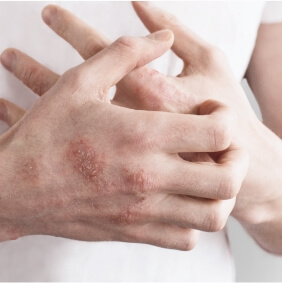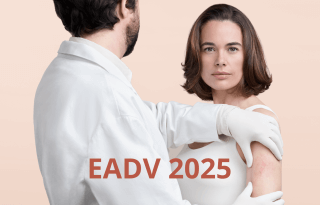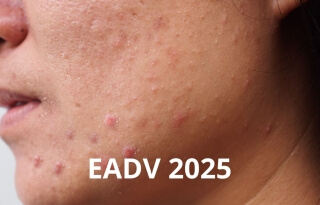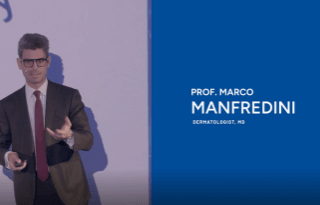Social networks and visible dermatoses
Pierre Fabre and Kap Code present a study that uses artificial intelligence to analyze the difficulties expressed by patients with visible dermatoses on social networks.
Through their public testimonials, patients express their difficulties and suffering, or ask for advice about their skin disease on social networks.
Toulouse, November 30, 2022. After presenting the first international study on the prevalence and psycho-social impact of chronic visible dermatoses "Visibles Diseases of the SKIN" (VDS) at the end of 2021, the Pierre Fabre Group's Patient & Consumer Relations department and the start-up Kap Code, specialized in the analysis of real-life health data and particularly patient verbatims on social networks, today announce the results of a complementary study, focusing on the difficulties expressed by patients suffering from 5 visible skin diseases - psoriasis, eczema, vitiligo, rosacea and acne - carried out using data collected over three years (from September 2018 to September 2021) on open social networks1

The aim of the study was to analyze the impact of visible dermatoses on patients' quality of life through their verbatims on social networks. These exchanges constitute real-life data which were analyzed to gain a better understanding of patients' experiences, the impact of their disease and the difficulties encountered on a daily basis.
Quality of life is a very broad concept that can be influenced by physical and psychological health, level of dependency, social relationships and the environment. Out of more than 20,000 messages observed, the most frequently cited illnesses are acne (63%), eczema (22%), psoriasis (10%), vitiligo (4%) and, finally, rosacea (1%). The messages posted by Internet users show the common problems encountered by sufferers, but also the fact that the needs expressed are sometimes specific to certain pathologies. It's important to change the way we look at these visible dermatoses, and this is our commitment through the VDS (Visible Diseases of the Skin) program.
Five skin diseases with a strong physical (50%) and psychological (30%) impact.
Taking all dermatoses together, the physical impact has a psychic repercussion that adds tò an already altered self-image. The psychological impact is particularly linked to the symptoms of display diseases and the difficulty of managing them, especially when they evolve in flare-ups. Finally, acceptance of the disease, therapeutic wandering and fear of the undesirable effects of treatments contribute tò the situation of ill-being expressed by patients.
For all dermatoses, the difficulties most encountered are:
- The fear and management of disease symptoms,
- Psychic impact in the general sense (loneliness, depression, anxiety, stress, fear of the gaze of others and of oneself),
- Damage to self-image. In addition, analysis of co-occurrences reveals the existence of links between the various difficulties encountered.
Acne has a strong impact on self-image
Internet users express the need for feedback and information on treatments, which are a source of questioning and concern about side effects perceived as heavy. Patients, most of whom are teenagers, and their parents wonder about the benefits/risks balance. The difficulty of erratic treatment is frequently mentioned, along with the fear of undesirable side effects.
In the case of eczema, relatives who are also affected often speak out
In the case of eczema in newborns, young mothers are also greatly affected by the management of flare-ups. Providing support is energy-intensive, and is often a source of worry and questioning
about managing symptoms and adapting lifestyle habits. Likewise, the impact on daily activities is often expressed, particularly in terms of how symptoms disrupt sleep quality.
Psoriasis: the vicious circle between stress and flare-ups is often cited
Patients talk about the link between stress and psoriasis flare-ups, which are self-perpetuating. Addressing the psychic dimension is a subject in itself for these patients, who want to put an end to this vicious circle. With regard to treatment wandering, the fear and management of flare-ups are attributed to the ineffectiveness of conventional treatments in stabilizing the disease. Biotherapies are described here as a solution and a new-found freedom.
Rosacea is a skin disease which, according to Internet users, is not sufficiently recognized, leading to misdiagnosis.
Social anxiety due to impromptu redness leads patients to modulate certain activities to avoid finding themselves in embarrassing situations. Discussions frequently focus on therapeutic wandering and the fact that each patient may react differently to the same products.
In the case of vitiligo, the progressive fear of seeing depigmentation spread is at the forefront of discussions.
For vitiligo, the psychological impact is directly linked to symptoms that disrupt self-image, with great difficulty in accepting the disease, in addition to the weight of other people's gaze. Depigmentation is the main symptom mentioned by patients. They describe a fear of the progression of depigmented areas and the worsening of the "flaunting" nature of the disease.
Social networks: a new communication channel to raise awareness of the burden of visible dermatoses
This study analyzing the impact on quality of life and burden, freely expressed by patients with visible dermatoses on social networks, joins the existing bibliography with an emphasis on the typology of impact per dermatosis, which is less common.
The world is changing, and so are modes of communication. Today, patients' voices are no longer confined to the doctor's office or their peers. Social networks have opened up a new channel, perhaps even freer because it's hidden behind a screen. This is even truer for skin sufferers, for whom the visibility of their condition can be a barrier to communication.
Today, it is possible to capture these free words and find new elements in them, complementary to all conventional studies, in order to better understand the burden of skin diseases and provide better answers.
About Pierre Fabre
Pierre Fabre is the world's 2nd largest dermo-cosmetics laboratory and France's 2nd largest private pharmaceutical group. Its portfolio includes several medical franchises and international brands such as Pierre Fabre Oncologie, Pierre Fabre Dermatologie, Eau Thermale Avène, Klorane, Ducray, René Furterer, A-Derma, Darrow, Glytone, Naturactive and Pierre Fabre Oral Care. In 2021, Pierre Fabre recorded sales of 2.5 billion euros, 66% of which were generated internationally in over 100 countries. The group has always been based in the Occitanie region, producing over 95% of its products in France, and employs around 9,500 people worldwide. Pierre Fabre is 86% owned by the Fondation Pierre Fabre, a foundation recognized as being in the public interest since 1999, and secondarily by its employees through an employee shareholding plan.
The Group's CSR approach has been assessed by the independent body AFNOR Certification at the "Exemplary" level of the Engagé RSE label (ISO 26 000 standard for sustainable development).
www.pierre-fabre.com,@PierreFabre
Press contacts
Pierre Fabre
Caroline Perdrix-Thomas
Caroline.perdrix@pierre-fabre.com
FP2COM
Florence Portejoie
0607768283
1. Twitter, YouTube, Doctissimo, BabyCenter, Carenity, Journal des Femmes, Beauté Test.
Interested in our news?
Discover those of our other brands.
Want to read on?
This access is reserved for professionals, registered on Pierre Fabre For Med.
To access the full content, please register or log in if you already have an account.


